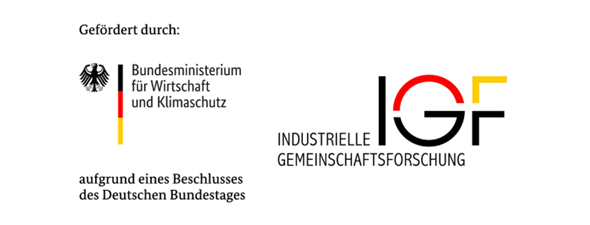
| Period: |
01.01.2022-31.12.2024 |
|---|---|
| Funder: | AiF
Grant No: 01IF22046 N |
| Project Manager: | Tobias Schanz |
| Division: | Chemical Technology |
| Team: | Photocatalysis |
Motivation
Technological advances in analytics have made it possible to detect over 1,000 anthropogenic trace substances in our drinking water cycle. The high number of these micropollutants results from the fact that numerous organic trace substances are usually only incompletely degraded in the first three mechanical-biological treatment stages of municipal wastewater treatment plants. These chemicals then enter our drinking water via the discharge of polluted wastewater into the water cycle, which has greatly increased social and economic interest in new processes for wastewater treatment, especially for the introduction of a fourth treatment stage. Suitable fourth treatment stages for the removal of micropollutants from the water cycle include adsorption processes with activated carbon or chemical degradation with so-called advanced oxidation processes (AOPs). One promising AOP process is wastewater treatment in an electrolysis cell, which has not yet reached technical use because of the comparatively high energy input. Pollutants are eliminated with reactive oxygen species (ROS), which are generated in situ at a boron-doped diamond electrode (BDD) and a gas diffusion electrode (GDE). Another challenge for electrolysis is the very low concentrations of trace substances, as this led to very high specific energy consumption and poor power efficiency. However, this problem can be solved with the use of a photoelectrochemical process, as such a system can be operated in a more energy-efficient way by using solar energy, thus saving energy and process costs compared to classical electrolysis. The elimination of organic trace substances is also based on oxidation with reactive oxygen species (e.g. hydroxyl radicals or H2O2). The decisive factor in water purification with AOPs is that the degradation of the trace substances is a complete mineralization and no undesired by-products accumulate, which are possibly even more harmful than the initial molecule. The innovative idea of this project is to convert solar energy directly into chemical energy and thus degrade pollutants in wastewater. By using sunlight as an energy source, the costs of wastewater treatment (for the fourth treatment stage) should be lowered, and CO2 emissions reduced.

Figure 1. Structure and mode of operation of the planned photoelectrochemical reaction cell
back

The IGF project No. 01IF22046 N of the research association DECHEMA e.V. is funded by the Federal Ministry of Economics and Climate Protection (BMWK) via the DLR within the framework of the programme for the promotion of joint industrial research (IGF) on the basis of a resolution of the German Bundestag.
Dr. Jonathan Bloh
Tel.: 069 / 75 64-387
E-Mail: jonathan.bloh
M. Sc. Tobias Schanz
Tel.: 069 / 75 64-675
E-Mail: tobias.schanz